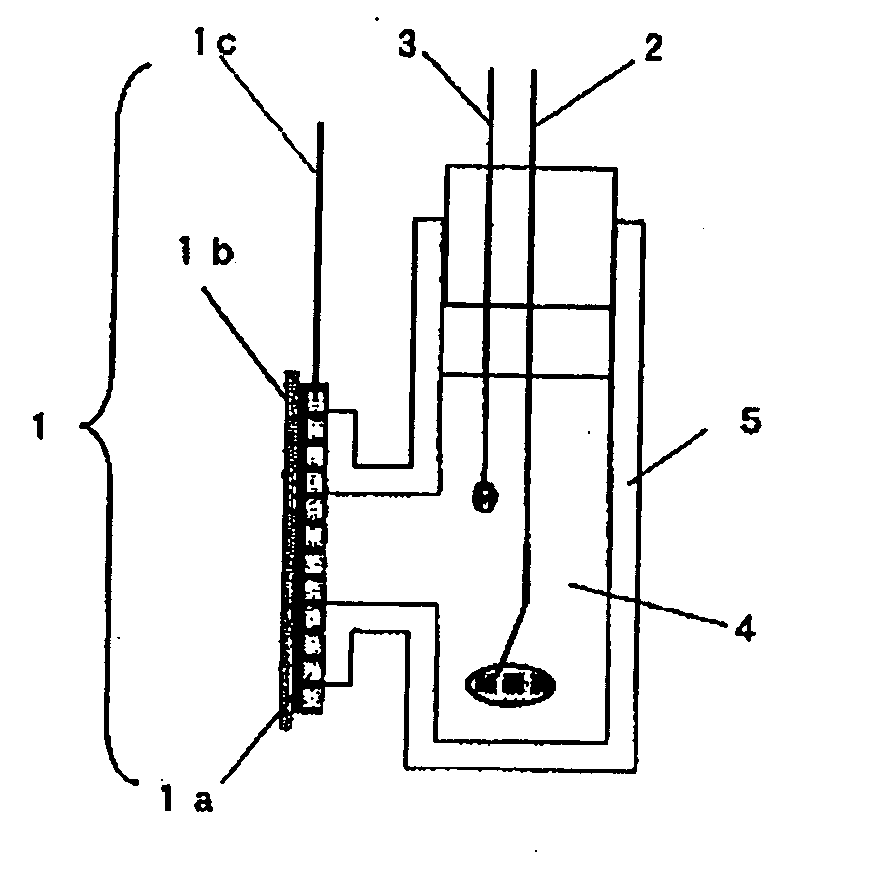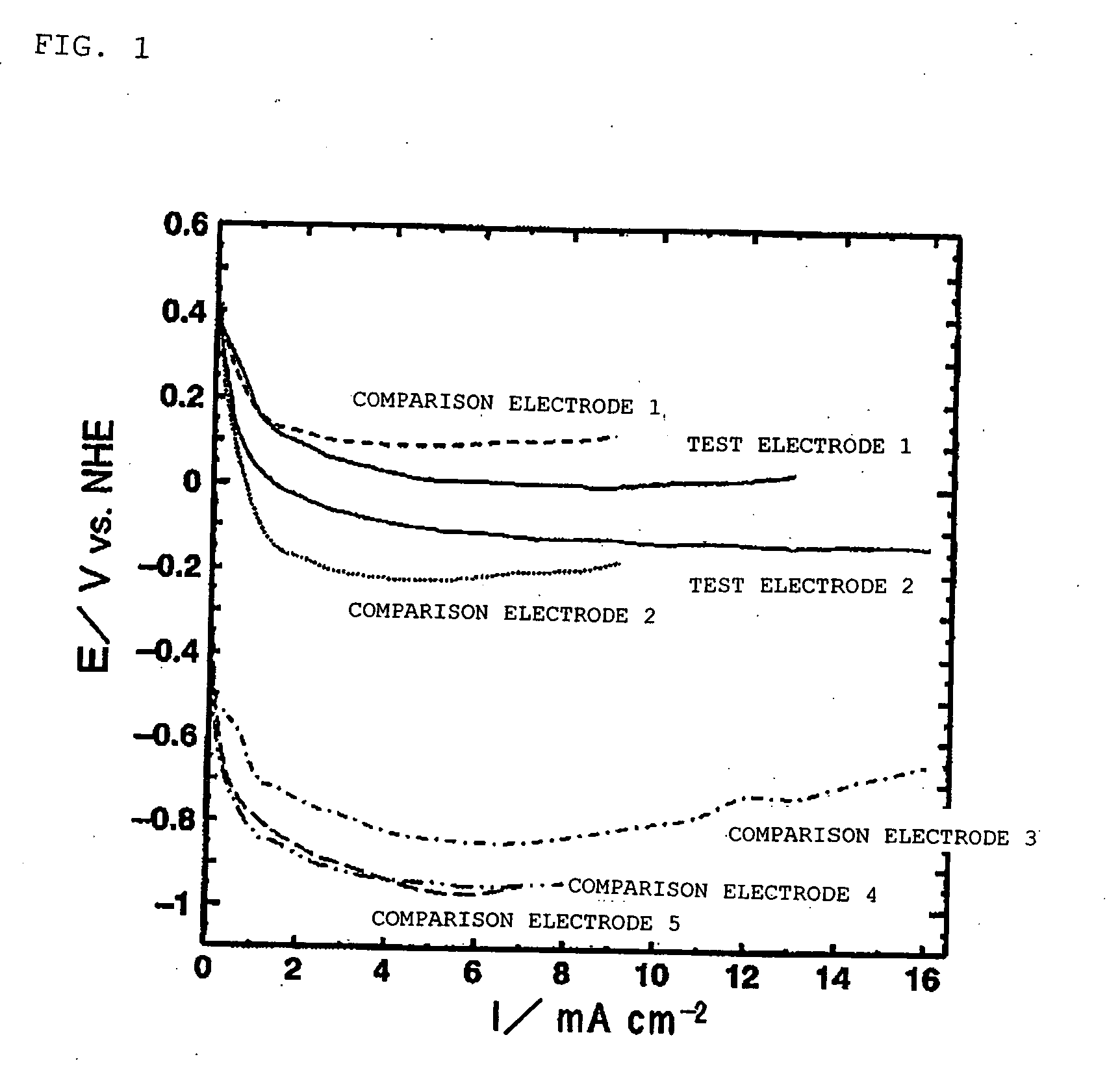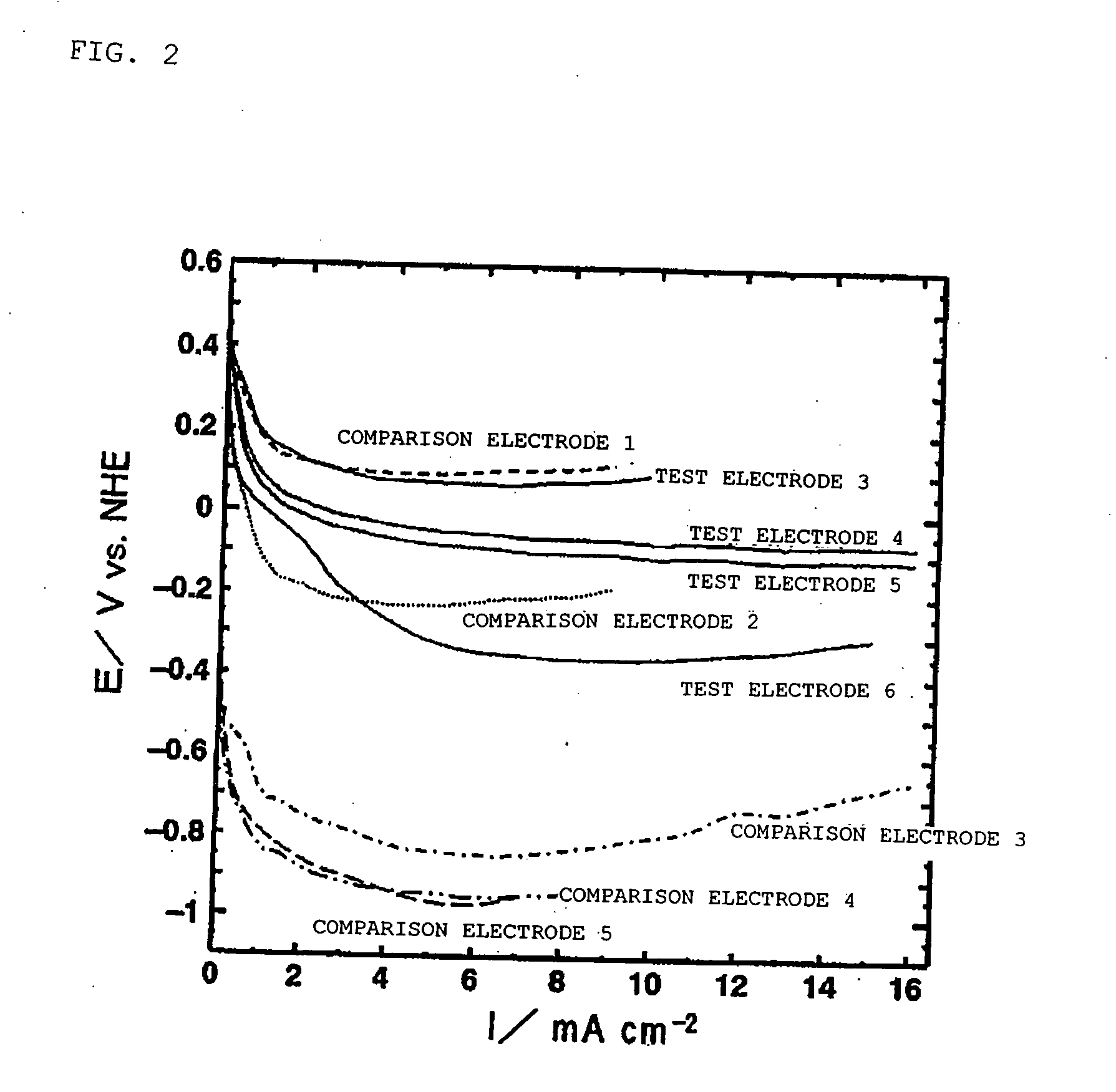Oxygen reduction electrode and electrochemical element using same
a technology of oxygen reduction electrode and electrochemical element, which is applied in the direction of electrolysis components, electrolysis processes, cell components, etc., can solve the problems of oxygen degradation of these members, achieve the effect of reducing the overvoltage of the electrod
- Summary
- Abstract
- Description
- Claims
- Application Information
AI Technical Summary
Benefits of technology
Problems solved by technology
Method used
Image
Examples
example 1
[0174] Fabrication of Test Electrodes 1 and 2
[0175] Strained beer lees containing beer yeast were carbonized in a nitrogen atmosphere at 800° C., and test electrodes 1 and 2 were fabricated using a charcoal-based material obtained by performing water vapor activation at 900° C.
[0176] The solid carbon content in the resultant charcoal-based material was approximately 64% by mass. The ash content as measured by elemental analysis was approximately 30% by mass. It was apparent from elemental analysis by X-ray fluorescence that phosphorus (P) accounted for approximately 30% by mass, calcium (Ca) was 23% by mass, magnesium (Mg) was 7% by mass, potassium (K) was 3% by mass, and silicon (Si) was approximately 20% by mass, and that P and Ca were the main components. Observation of characteristic absorptions in the infrared spectrum also showed C—O—C absorption having an absorption peak at a wave number of approximately 1110 cm−1, C═C absorption having an absorption peak at approximately 15...
example 2
[0180] Fabrication of Test Electrode 3
[0181] Strained beer lees containing beer yeast were carbonized in a nitrogen atmosphere at 800° C., and water vapor activation was performed at 900° C. 4 weight parts of the resultant charcoal-based material (average particle diameter: approximately 5 μm), 4 weight parts of a lower oxide of manganese (a mixture of Mn3O4 and Mn5O8; average particle diameter of approximately 10 μm), 1 weight part of carbon black, and 0.2 weight part of fluororesin binder (PTFE) were mixed. A sheet was fabricated from this mixture using a gas-permeable electrically conductive base made of a nickel-plated stainless steel mesh (thickness of 0.15 mm; 25 mesh) as a core. A fluororesin porous sheet (porosity: approximately 50%; thickness: 0.2 mm) was then pressed onto one side of this sheet and test electrode 3 with a thickness of approximately 3 mm was fabricated.
example 3
[0182] Fabrication of Test Electrode 4
[0183] 5 weight parts of beer yeast and 0.1 weight part of calcium hydrogen phosphate were mixed into 0.1 weight part of an anhydrous silicate binder, and the product was mold-cured. The resultant mixture was carbonized in a nitrogen atmosphere at 900° C. The resultant charcoal-based material was pulverized to a maximum diameter of 20 μm or less. 25 μg of the resultant powder were dispersed in 5 μL of an ethanol solution in which 0.05% by mass of Nafion was dissolved. Test electrode 4 containing the charcoal-based material and Nafion was fabricated by a process whereby the dispersion was dripped onto the waterproofed carbon paper base used in Example 1 so as to completely cover the surface thereof, the product was dried in hot air, and the ethanol was again vaporized. The electrode was also formed to give a charcoal-based material coverage of 2 mg / cm2.
PUM
| Property | Measurement | Unit |
|---|---|---|
| temperature | aaaaa | aaaaa |
| temperature | aaaaa | aaaaa |
| temperature | aaaaa | aaaaa |
Abstract
Description
Claims
Application Information
 Login to View More
Login to View More - R&D
- Intellectual Property
- Life Sciences
- Materials
- Tech Scout
- Unparalleled Data Quality
- Higher Quality Content
- 60% Fewer Hallucinations
Browse by: Latest US Patents, China's latest patents, Technical Efficacy Thesaurus, Application Domain, Technology Topic, Popular Technical Reports.
© 2025 PatSnap. All rights reserved.Legal|Privacy policy|Modern Slavery Act Transparency Statement|Sitemap|About US| Contact US: help@patsnap.com



